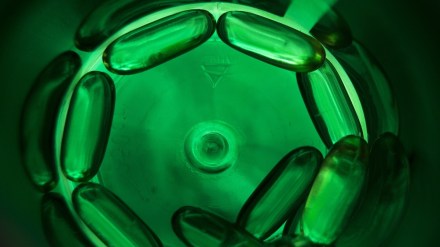Vitamin E is crucial for various bodily functions. Health experts have classified vitamin E as an essential nutrient for humans that is found naturally in some types of food and is also widely available as a nutritional supplement.
Vitamin E is a vitamin that dissolves in fat. It is found in many foods including vegetable oils, cereals, meat, poultry, eggs, and fruits. Vitamin E is used for treating vitamin E deficiency, which is rare, however can occur in people with certain genetic disorders and in very low-weight premature infants.
It is noteworthy that too many vitamin E can lead to health complications known as vitamin E overdose, or vitamin E toxicity.
What is vitamin E toxicity?
When an excessive amount of vitamin E gets accumulated in your body and causes health complications it leads to vitamin E toxicity. It’s rare, but can happen from taking excessive vitamin E supplements.
According to 2023 study reported by National Institute of Health, vitamin E toxicity can cause major bleeding events, including the potential for intracranial hemorrhage.
While vitamin E toxicity is associated with an increased risk of bleeding, its deficiency has been associated with neurologic diseases and anemia, the study stated.
What are the symptoms of vitamin E toxicity?
It is impossible to consume too much vitamin E from food. However, it is possible to consume too much vitamin E through supplements. According to Mayo Clinic, rarely, oral use of vitamin E can cause:
- Nausea
- Diarrhea
- Intestinal cramps
- Fatigue
- Weakness
- Headache
- Blurred vision
- Rash
- Gonadal dysfunction
- Increased concentration of creatine in the urine (creatinuria)
Taking higher doses of vitamin E might increase the risk of side effects. Also, there is concern that people in poor health who take high doses of vitamin E are at increased risk of death, Mayo Clinic maintained.
According to experts, use of vitamin E can interact with many conditions. For instance, research suggests that oral use of vitamin E might increase the risk of prostate cancer. Other research suggests that vitamin E use might increase the risk of death in people with a severe history of heart disease, such as heart attack or stroke, Mayo Clinic stated.
How much vitamin E do you need?
The Daily Value (DV) for vitamin E is 15 mg per day. The following foods are rich in vitamin E:
- Oils: soybean oil, sunflower oil, safflower oil, wheat germ oil, corn oil
- Nuts and seeds: sunflower seeds, almonds, hazelnuts, peanut butter, peanuts
- Fruits: kiwis, mangoes, tomatoes
- Vegetables: spinach, broccoli
For vitamin E, the Upper Limit (UL) — or the amount that most people can consume daily through food and supplements without complications — is 1,000 mg, as per Healthline.
